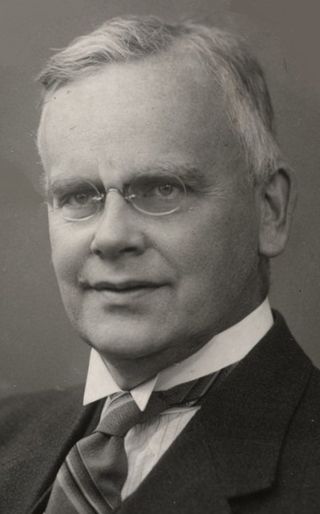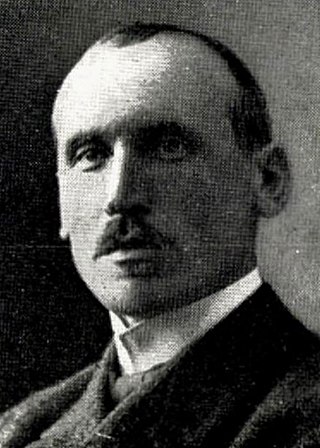
Stokken is a former municipality in the old Aust-Agder county in Norway. The 11-square-kilometre (4.2 sq mi) municipality existed from 1919 until 1962 when it was merged into the newly created Moland municipality. Today, the area is a part of the present-day municipality of Arendal in Agder county. The administrative centre of the municipality was the village of Eydehavn. The Stokken Church was the main church for the small municipality located just outside the town of Arendal.
Events in the year 2006 in Norway.
Events in the year 1921 in Norway.
Events in the year 1916 in Norway.
Events in the year 1914 in Norway.

Harald Gram was a Norwegian jurist, politician and genealogist. He was secretary general for the Conservative Party of Norway for 22 years, deputy mayor of Aker, member of Parliament from 1928 to 1936, and stipendiary magistrate in Oslo from 1936 to 1957. He was also noted for his work during World War II.

Lauritz Sand was a Norwegian topographer, military officer in the Dutch army, estate owner in the Dutch East Indies, business man and resistance pioneer of World War II. He was called the hardest tortured person in Norway during the war, and came to be an important symbol of the resistance against the Nazi regime.
Tore Gjelsvik was a Norwegian geologist and polar explorer. He headed the Norwegian Polar Institute from 1960 to 1983, and played an important role in the Norwegian resistance during World War II.
Vilhelm Andreas Wexelsen Evang was a Norwegian military officer. He headed the military intelligence in Norway for almost twenty years, from 1946 to 1965.

Petter Moen was a Norwegian resistance member later known for his diaries.

Helge Krog was a Norwegian journalist, essayist, theatre and literary critic, translator and playwright.
Operation Bittern was a military operation in occupied Norway planned and carried out in 1942 by the British Special Operations Executive (SOE) and the Norwegian government-in-exile in London.
Gunnar Haarstad was a Norwegian jurist and police officer, a resistance member during World War II, and later head of the Norwegian Police Surveillance Agency for fifteen years.
Noregs Ungdomslag is a Norwegian cultural society formed in 1896. It has around 17,000 members and 450 local chapters.

Olaus Islandsmoen was a Norwegian educator, museologist and politician.

Otto Torgersen was a Norwegian architect and advertising executive.
Ole Jacob Malm was a Norwegian physician. He was born in Kristiania, and was a grandson of Ole Olsen Malm. He was professor of medicine at the University of Oslo and senior consultant at Ullevål Hospital in Oslo from 1964 to 1980. During the Occupation of Norway by Nazi Germany he assumed central positions in the resistance movement, including a period as Secretary General of the Coordination Committee. He was decorated Knight, First Class of the Order of St. Olav in 1976.
Eva Antonie Kløvstad, née Jørgensen was a Norwegian resistance member and Milorg leader from World War II.
Events in the year 2018 in Norway.









